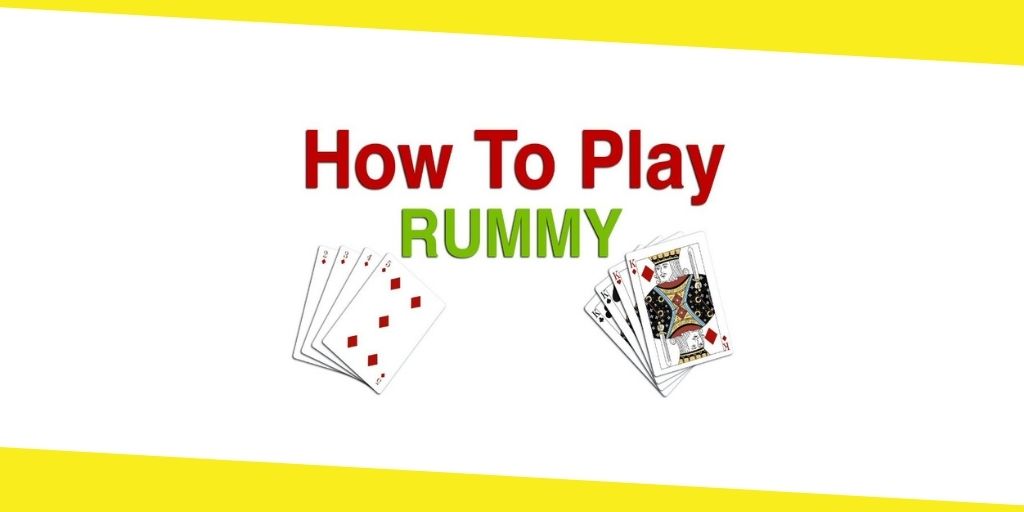5 Rules To Follow While Playing Rummy Card
This post was last updated on July 28th, 2023

Rummy is a widely known card game, and people of all ages play it for fun. Even though there are many game variations, learning the basics is enough to help you get started in the entire family of Rummy card games. Here are some of the rules you need to understand if you are looking forward to playing the Rummy card game.
Contents
ToggleSet-Up
Before a game is played, a dealer should be selected. Every player picks a card from a shuffled deck, and the one with the lowest ranking card is the dealer. The dealer will reshuffle the deck and issue Rummy cards to each player clockwise as follows.
- If two people are playing, they each get 10 cards.
- If three or four people are playing, they each get seven cards.
- If five or six people are playing, they each get six cards.
The undealt cards will be placed facing down at the center of the table to be the draw pile. The top card on the draw pile should be placed facing up beside the draw pile to be the discard pile.
If the draw pile is depleted before the game ends, shuffle all the discard pile cards and use the one on top to create a draw pile.
Gameplay
The player on to the left side of the dealer starts playing, following the sequence below:
- One card should be drawn, and it should be either the top from the draw pile or the discard pile.
- The player can play their meld of cards or add to other players’ meld.
- The player should discard one card facing up to the discard pile. The only exception is when a player has melded all their cards. Then, they do not have to discard.
Recommended: Why Is Rummy Ruling The Online Gaming League?
Melding
- A meld of cards is played when a player gets three or four of a kind or has a run of three or four of a kind. A run is achieved when a player has three or more cards with the same suit appearing consecutively either in a decreasing or increasing order.
- A player making a meld must lay the card on the table with the face-up.
- Melding can only be done once in every turn and is optional.
Ace can either be low or high
In some Indian betting sites, Ace cards are counted as low or high cards. If Ace is a high card, a meld of Q, K, A is valid, and each Ace card is worth 15 points in the Rummy card game.
Laying Off
- A player can discard Rummy cards by adding more onto the melds previously made. If the player makes a meld of 3 kings and another player plays the fourth King, they can add it to the existing meld with three kings to complete the sequence.
- If a meld has 2, 3, and 4 clubs and a player has an Ace of clubs, the player needs to place it before the 2 to create a run.
- Laying off is voluntary, and a player is not limited to the number of times they can lay off.
Going out
- A player will go out when they play the last card they have either by making a card meld, laying off, or adding it to the discard pile.
- If the game requires the player to discard the final card, the player cannot meld or lay off to go out.
Scoring in Rummy card game
When playing Rummy on an Indian betting site, the round is scored when one player goes out, and all the cards left with the players will be handed to the winner, as shown below.
- One point will be awarded for any Aces
- The value of number cards relies on the face number
- 10 points are awarded for each face card
Going Rummy
- To go Rummy, a player needs to play all their cards in one play, having not played any cards from the start of the hand.
- All points for that hand will be doubled if a player goes Rummy.
Winning in Rummy card
A player has to reach the required number of points or have the highest points after all the predetermined hands are played to win in Rummy.
Rummy Card is simple to play, and if you follow the rules provided, you will improve your experience and make more money. These rules apply to nearly all variations of Rummy, but some online casinos may have additional table rules.
Recommended For You
Gold Jewelry Redefines Rich Culture and Traditions
Most Inside
Most Inside offers high-quality recommendations and valuable updates to enhance all aspects of your life, providing premium guidance and enriching experiences.




